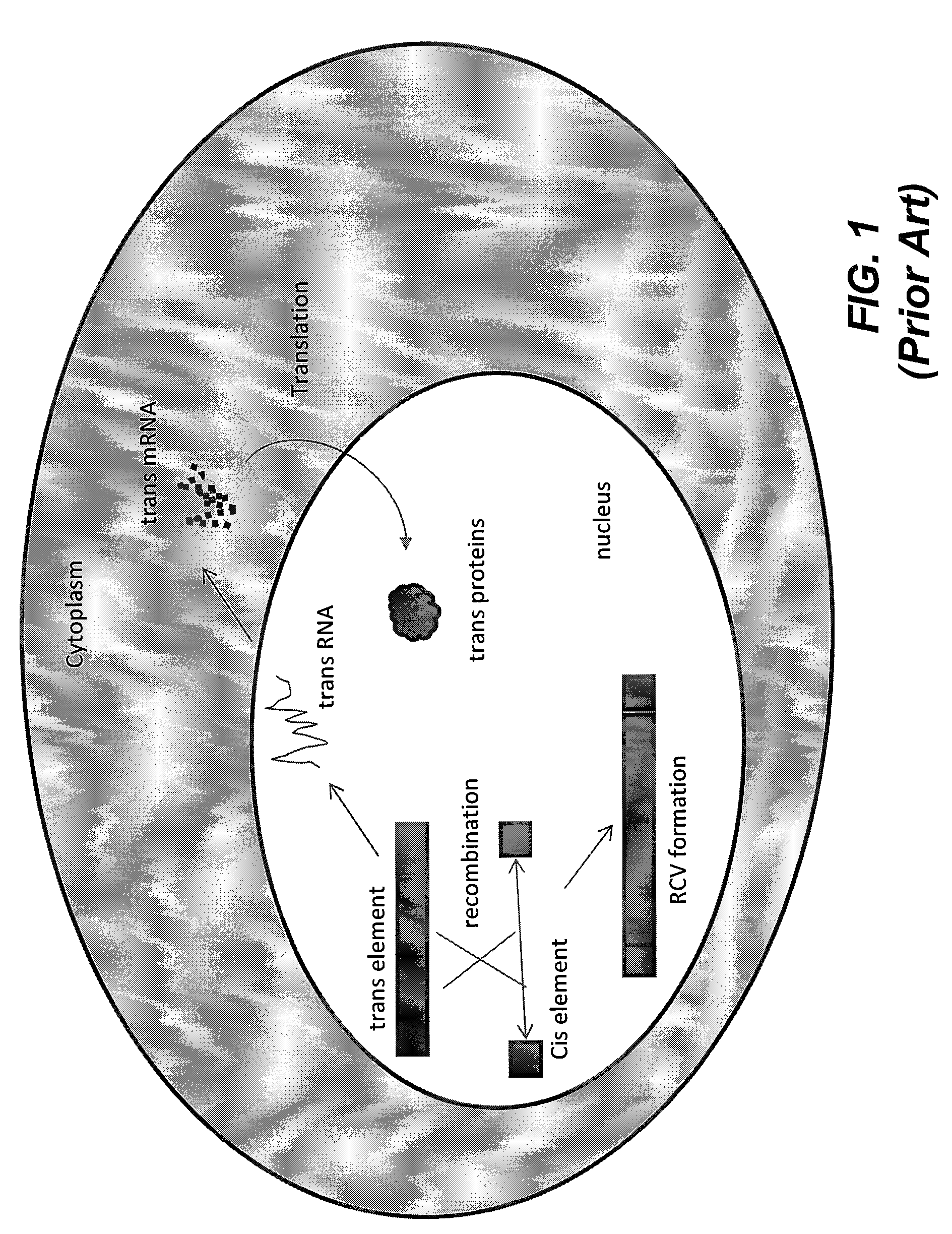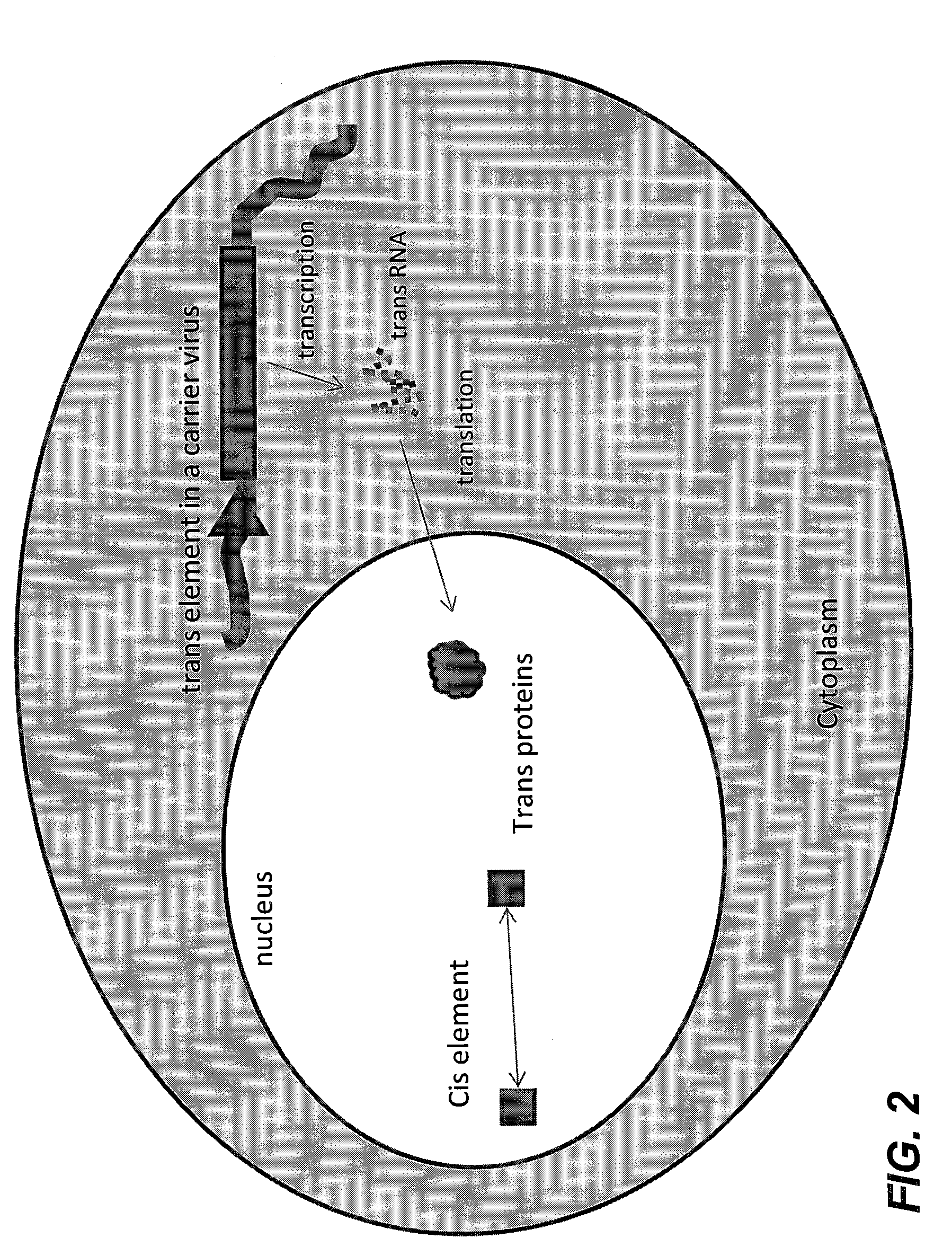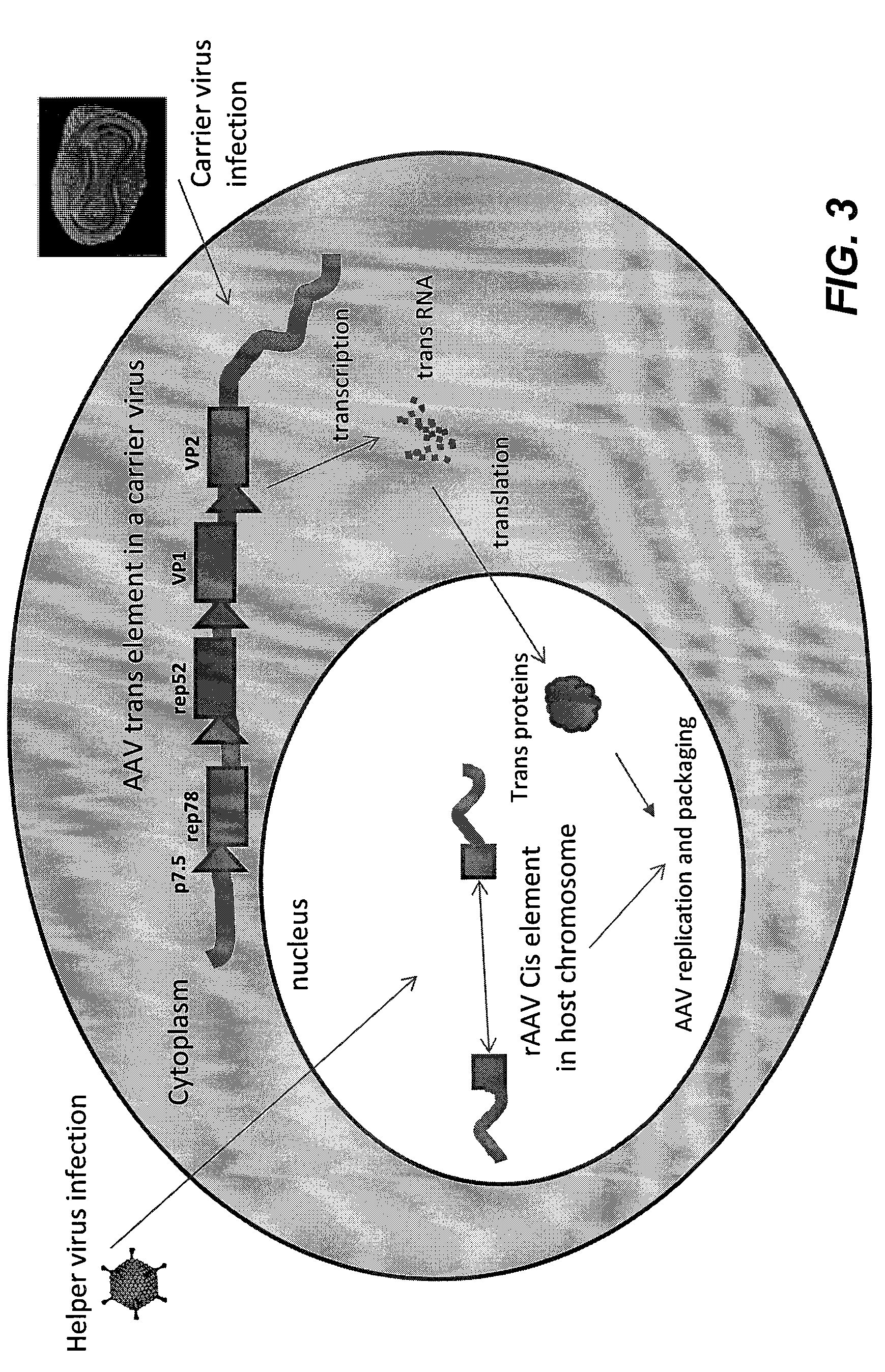Methods and compositions for the production of recombinant virus vectors
a technology of recombinant viral vectors and compositions, applied in the field of virology and molecular biology, can solve the problems of replication-competent viruses that are undesirable for treatment purposes, and the recombinant viral vector cannot reproduce itself in patients, so as to achieve the effect of reducing or minimizing
- Summary
- Abstract
- Description
- Claims
- Application Information
AI Technical Summary
Benefits of technology
Problems solved by technology
Method used
Image
Examples
example 1
Construction of Vaccinia Carrier Viruses Carrying Adenovirus Genes
[0100]The adenovirus cDNA gene, E1a, E1b, E2a, E4ORF6 are PCR amplified and cloned into plasmid vector Prb21 (Blasco and Moss, Gene, 1995, 158:157-162) in the MCS behind the vaccina virus p7.5 promoter. FIG. 7 shows a plasmid map of pRB21, including the nucleotide sequence of the promoter / multiple cloning site (MCS) region (SEQ ID NO:15). The resulting shuttle plasmids, designed pRB-E1a, pRB-E2b, pRB-E2a, pRB-E4ORF6, are then transfected into BSC cells and infected with vaccinia virus vRB12 (supra). The vRB12 virus lacks the gene encoding protein VP37. pRB21 provides a complete copy of the VP37 gene, thus allowing recombinant vaccinia virus to be selected on the basis of plaque formation. The carrier virus clone which expressed these gene products were then picked and amplified as described by Blasco and Moss (supra).
example 2
Construction of Vaccinia Carrier Viruses Carrying HSV Genes
[0101]The cDNA for HSV ICP4 and ICP27 are PCR amplified and cloned into pRb21 in the MCS behind the p7.5 promoter. The resulting shuttle plasmids pRB21-ICP4 and pRB21-ICP27 were then transfected into BSC cells and infected with vRB12. The carrier virus clone which expressed hepes gene were then picked and amplified as described in Example 1.
example 3
Construction of Vaccinia Carrier Viruses with AAV Genes
[0102]AAV rep and cap gene were PCR amplified from the ATG of rep78 to the stop codon of VP3 and cloned into pRb21 behind the p7.5 promoter (SEQ ID NO:1). The resulting shuttle plasmids, designated pRB-repcap (FIG. 8), was then transfected into BSC cells and infected with vRB12. The carrier virus clone which expressed AAV genes were then picked and amplified as described in Example 1. The resulting vaccinia carrier virus is named vvAAVRepcap. Western blot analysis showed that vvAAVrepcap mainly expressed Rep78. There are no cap proteins expressed. It demonstrated that each gene of AAV has to be specially cloned in order to provide proper gene expression.
[0103]AAV rep78, rep 68, rep52, rep40, vp1, vp2 and vp3 genes were PCR amplified. The amplified genes were individually cloned into pRb21 behind the p7.5 promoter. The resulting shuttle plasmids, designated pRB-rep78, pRB-rep68, pRB-rep52, pRB-Rep40, pRB-vp1, pRB-vp2 and pRB-vp3 ...
PUM
| Property | Measurement | Unit |
|---|---|---|
| diameter | aaaaa | aaaaa |
| time | aaaaa | aaaaa |
| structure | aaaaa | aaaaa |
Abstract
Description
Claims
Application Information
 Login to View More
Login to View More - R&D
- Intellectual Property
- Life Sciences
- Materials
- Tech Scout
- Unparalleled Data Quality
- Higher Quality Content
- 60% Fewer Hallucinations
Browse by: Latest US Patents, China's latest patents, Technical Efficacy Thesaurus, Application Domain, Technology Topic, Popular Technical Reports.
© 2025 PatSnap. All rights reserved.Legal|Privacy policy|Modern Slavery Act Transparency Statement|Sitemap|About US| Contact US: help@patsnap.com



